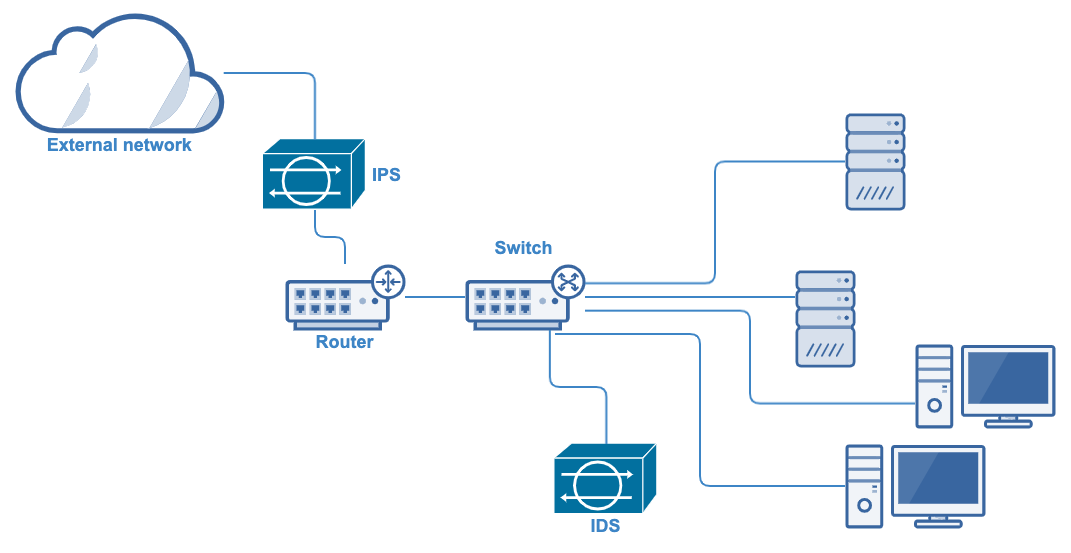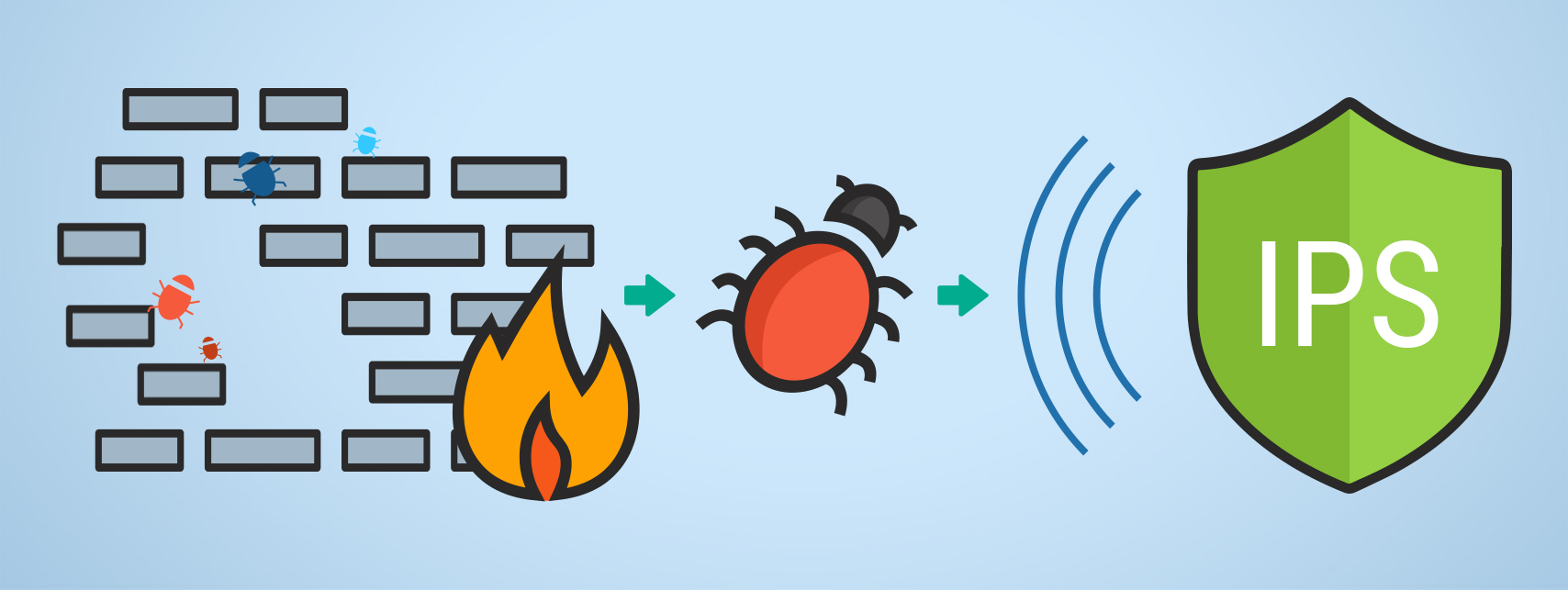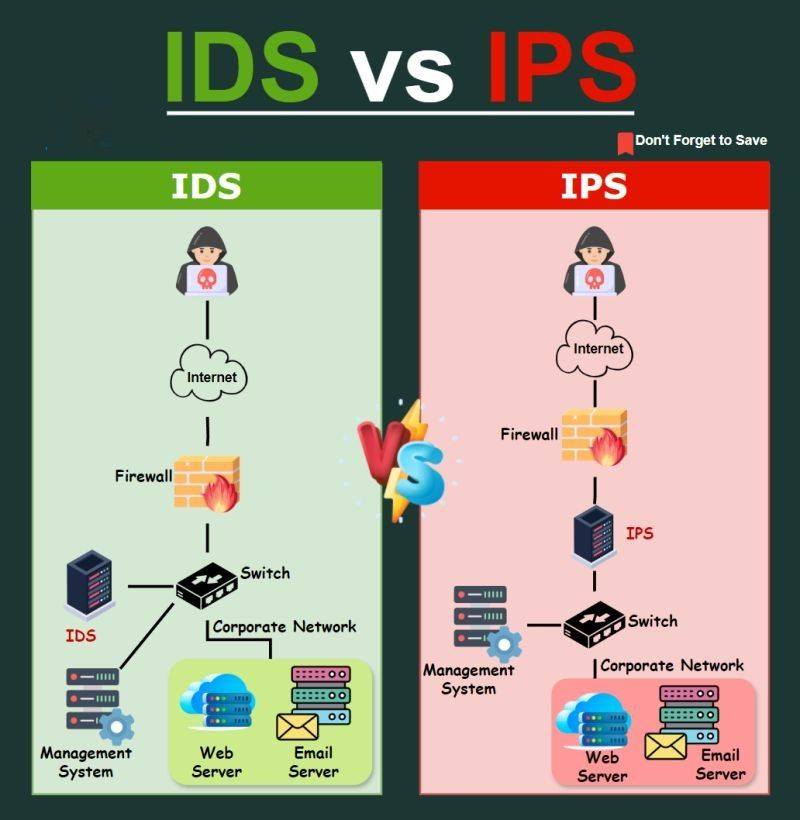In the field of network security, intrusion detection system (IDS) and intrusion prevention system (IPS) play a key role. This article will deeply explore their definitions, roles, differences, and application scenarios.
What is IDS(Intrusion Detection System)?
Definition of IDS
Intrusion detection system is a security tool that monitors and analyzes network traffic to identify possible malicious activities or attacks. It searches for signatures that match known attack patterns by examining network traffic, system logs, and other relevant information.
How IDS works
IDS works mainly in the following ways:
Signature Detection: IDS uses a predefined signature of attack patterns for matching, similar to virus scanners for detecting viruses. IDS raises an alert when traffic contains features that match these signatures.
Anomaly Detection: The IDS monitors a baseline of normal network activity and raises alerts when it detects patterns that differ significantly from normal behavior. This helps to identify unknown or novel attacks.
Protocol Analysis: IDS analyzes the usage of network protocols and detects behavior that does not conform to standard protocols, thus identifying possible attacks.
Types of IDS
Depending on where they are deployed, IDS can be divided into two main types:
Network IDS (NIDS) : Deployed in a network to monitor all traffic flowing through the network. It can detect both network and transport layer attacks.
Host IDS (HIDS) : Deployed on a single host to monitor system activity on that host. It is more focused on detecting host-level attacks such as malware and abnormal user behavior.
What is IPS(Intrusion Prevention System)?
Definition of IPS
Intrusion prevention systems are security tools that take proactive measures to stop or defend against potential attacks after detecting them. Compared with IDS, IPS is not only a tool for monitoring and alerting, but also a tool that can actively intervene and prevent potential threats.
How IPS works
IPS protects the system by actively blocking malicious traffic flowing through the network. Its main working principle includes:
Blocking Attack Traffic: When IPS detects potential attack traffic, it can take immediate measures to prevent these traffic from entering the network. This helps prevent further propagation of the attack.
Resetting the Connection State: IPS can reset the connection state associated with a potential attack, forcing the attacker to re-establish the connection and thus interrupting the attack.
Modifying Firewall Rules: IPS can dynamically modify firewall rules to block or allow specific types of traffic to adapt to real-time threat situations.
Types of IPS
Similar to IDS, IPS can be divided into two main types:
Network IPS (NIPS) : Deployed in a network to monitor and defend against attacks throughout the network. It can defend against network layer and transport layer attacks.
Host IPS (HIPS) : Deployed on a single host to provide more precise defenses, primarily used to guard against host-level attacks such as malware and exploit.
What's the difference between Intrusion Detection System (IDS) and Intrusion Prevention System (IPS)?
Different Ways of Working
IDS is a passive monitoring system, mainly used for detection and alarm. In contrast, IPS is proactive and able to take measures to defend against potential attacks.
Risk and Effect Comparison
Due to the passive nature of IDS, it may miss or false positives, while the active defense of IPS may lead to friendly fire. There is a need to balance risk and effectiveness when using both systems.
Deployment and Configuration Differences
IDS is usually flexible and can be deployed at different locations in the network. In contrast, the deployment and configuration of IPS requires more careful planning to avoid interference with normal traffic.
Integrated Application of IDS and IPS
IDS and IPS complement each other, with IDS monitoring and providing alerts and IPS taking proactive defensive measures when necessary. The combination of them can form a more comprehensive network security defense line.
It is essential to regularly update the rules, signatures, and threat intelligence of IDS and IPS. Cyber threats are constantly evolving, and timely updates can improve the system's ability to identify new threats.
It is critical to tailor the rules of IDS and IPS to the specific network environment and requirements of the organization. By customizing the rules, the accuracy of the system can be improved and false positives and friendly injuries can be reduced.
IDS and IPS need to be able to respond to potential threats in real time. A fast and accurate response helps to deter attackers from causing more damage in the network.
Continuous monitoring of network traffic and understanding of normal traffic patterns can help improve the anomaly detection capability of IDS and reduce the possibility of false positives.
Find right Network Packet Broker to work with your IDS(Intrusion Detection System)
Find right Inline Bypass Tap Switch to work with your IPS(Intrusion Prevention System)
Post time: Sep-26-2024








